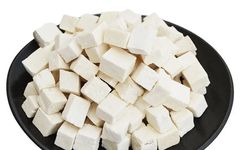

The complete Fu Ling (Poria) appears in round, oval, flat, or irregular clumps of varying sizes. The outer skin is thin, brownish or blackish-brown, rough, with wrinkles and constrictions, sometimes partially peeling off. It is solid in texture, with a granular fracture surface, light red near the edge, and small honeycomb-like holes, while the interior is white with some light red. Some have a core of pine root, commonly referred to as “Fu Shen block”. It has a faint aroma and a bland taste, and is sticky when chewed. The best quality is characterized by a solid weight, brownish outer skin, fine skin texture, no cracks, a delicate white fracture surface, and strong stickiness.
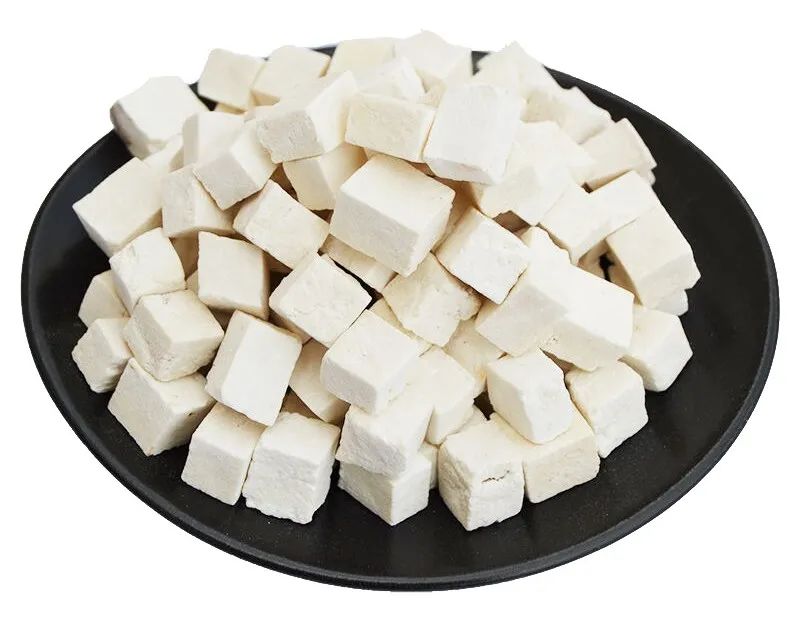
1. Fu Ling Pi (Poria Skin):
This is the outer skin of Fu Ling, which varies in shape and size. The outer surface is brownish to blackish-brown, while the inner surface is white or light brown. It is relatively soft and slightly elastic.
2. Fu Ling Kuai (Fu Ling Blocks):
These are pieces of Fu Ling cut after peeling, in block form of varying sizes. They are white, light red, or light brown.
3. Yin Pian (Slices):
These are irregular pieces, 1-2 cm long. The surface is white to off-white, slightly rough or flat, and hard in texture. It has a faint aroma and a bland taste.
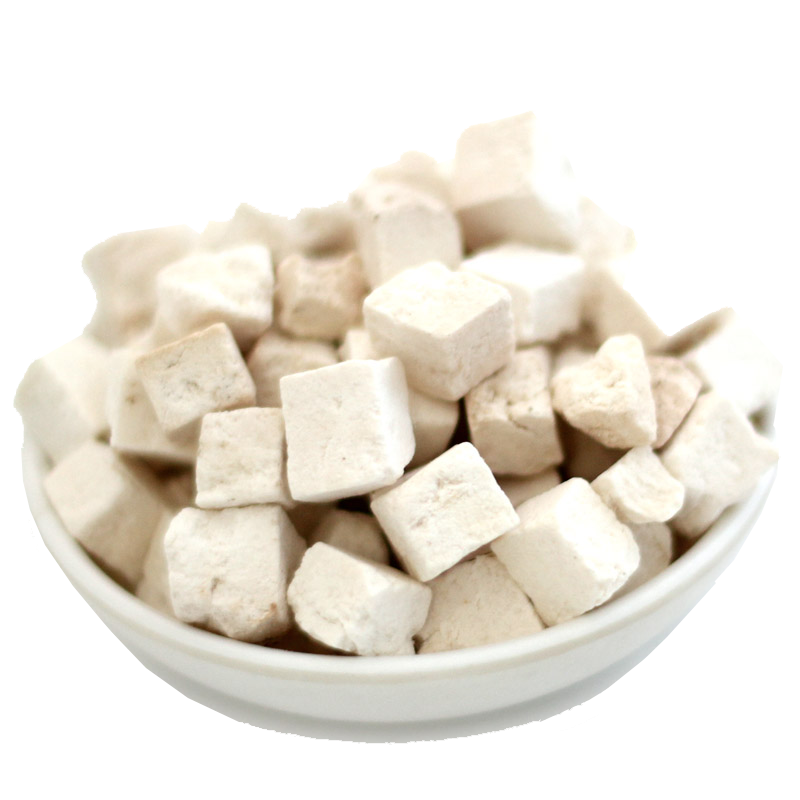
4. Chi Fu Ling (Red Poria):
Similar in shape to white Fu Ling, with a surface that is light brown-red to brownish.
5. Fu Shen (Poria Spirit):
These are square pieces, 4-5 cm on each side, and 0.5-0.7 cm thick. The surface is white to off-white, relatively flat, with a round core of pine root in the center or on one side. It is hard, with a rough fracture surface. It has a faint aroma and a bland taste.
Identification of Fu Ling: Fu Ling vs. Mu Shu (Cassava)
1. Observe the color:
Cassava has a more uniform color, mostly yellowish-white. Fu Ling can have dark brown or red surfaces that are smooth.
2. Observe the texture:
Cassava has vertical textures, is lighter in weight, and has a strong powdery quality. Fu Ling has no vertical texture, is denser, and does not leave powdery residue when grasped.
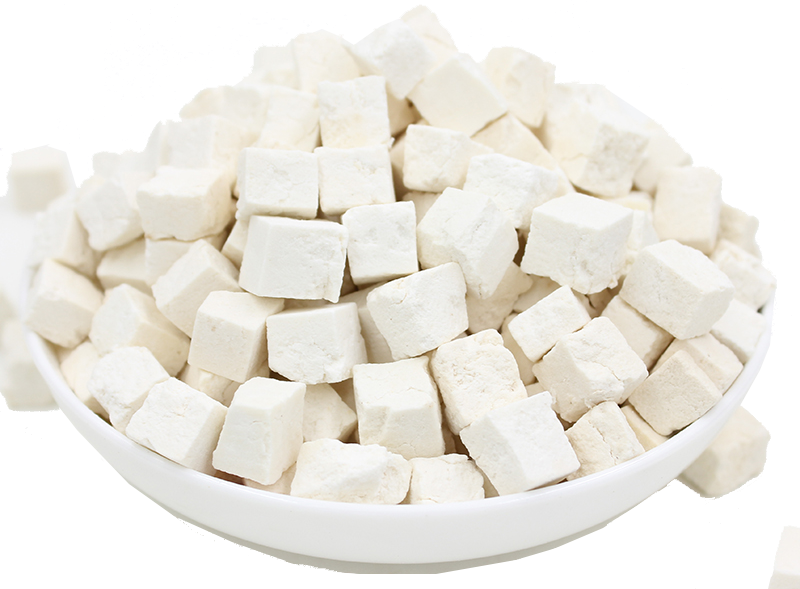
3. Observe the shape:
Cassava has an irregular shape and can be sliced with a knife, while Fu Ling appears as small square blocks that are difficult to cut or break into pieces.
4. Chemical reaction:
When iodine tincture is dropped on cassava, the surface turns blue, while it does not change color when dropped on Fu Ling.
5. Taste test:
Cassava has a sour and spicy taste, while Fu Ling has no taste.
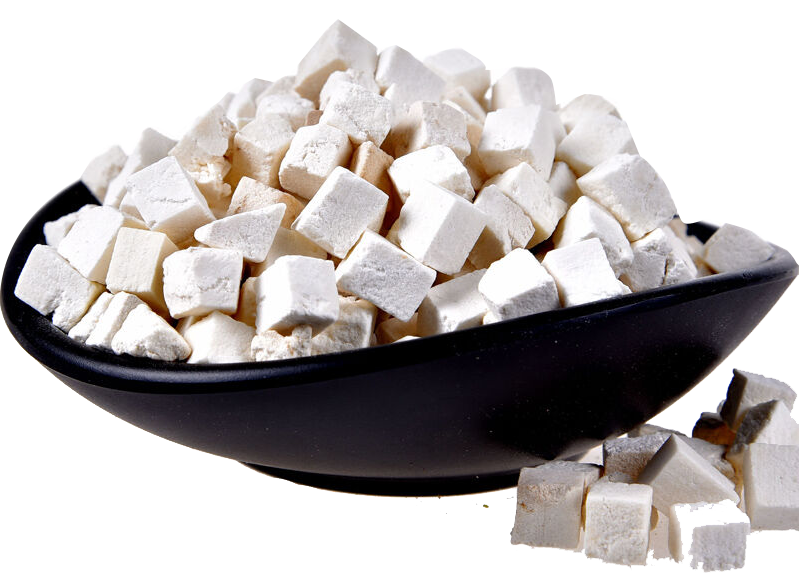
6. Boiling method:
After boiling, the water from cassava becomes cloudy, and the color changes, with the inside remaining raw when cut. After boiling, the water from Fu Ling remains clear, and Fu Ling stays white, with the inside fully cooked when cut.


